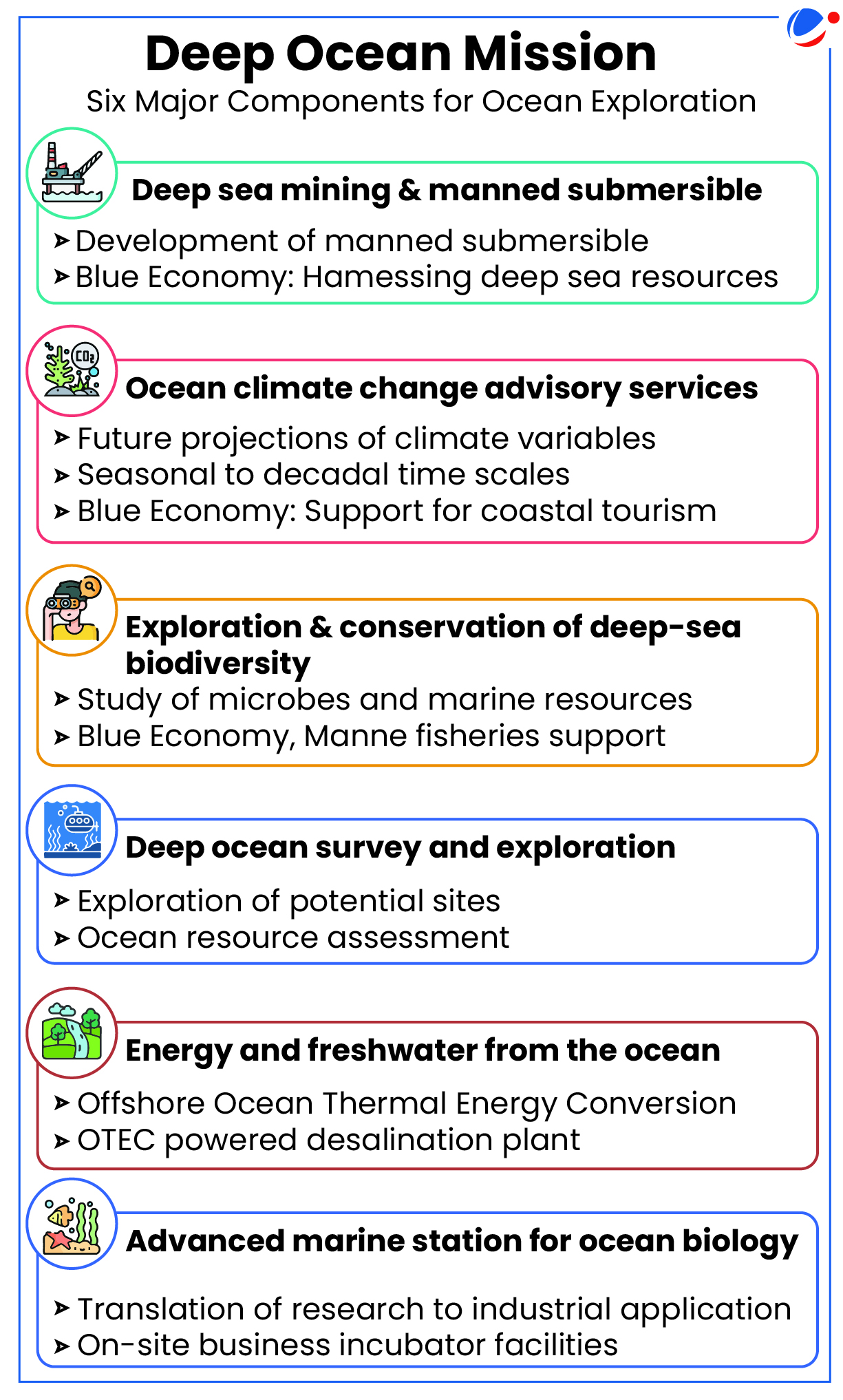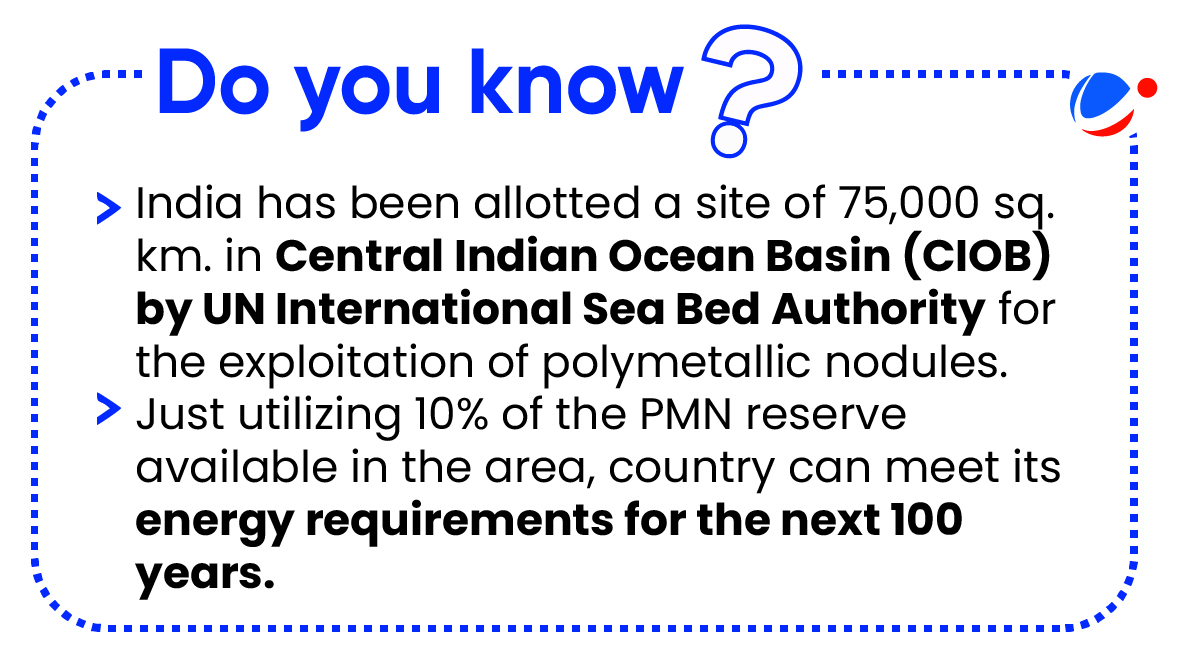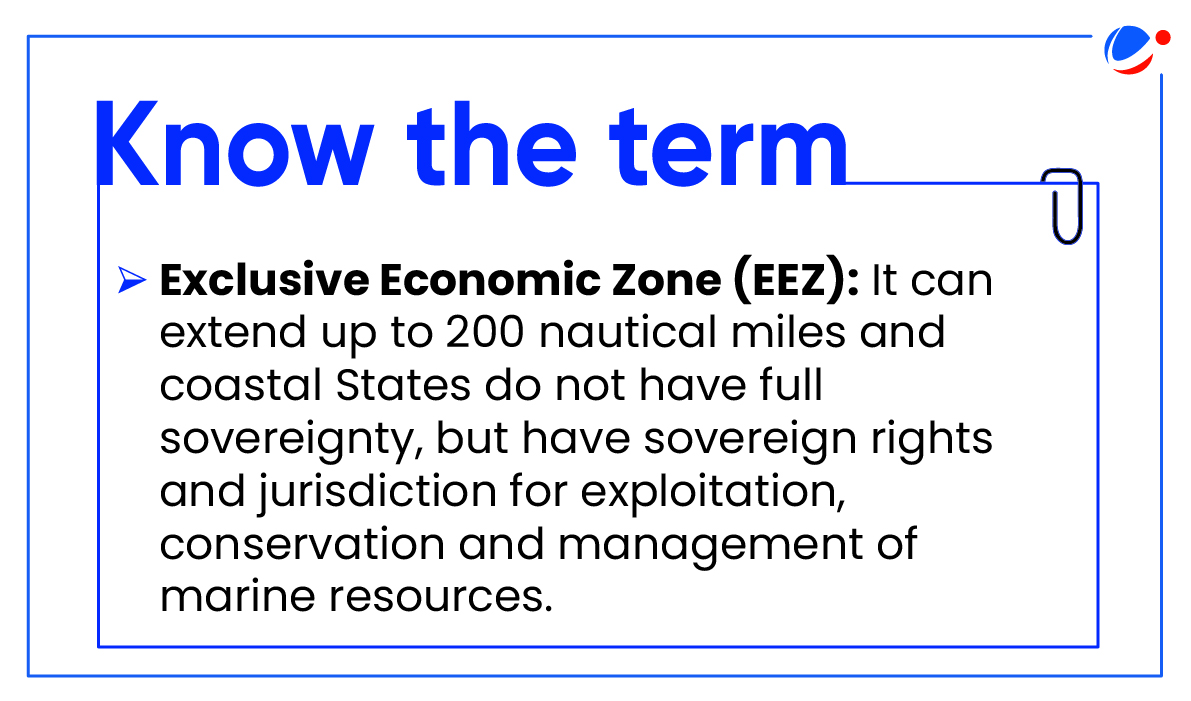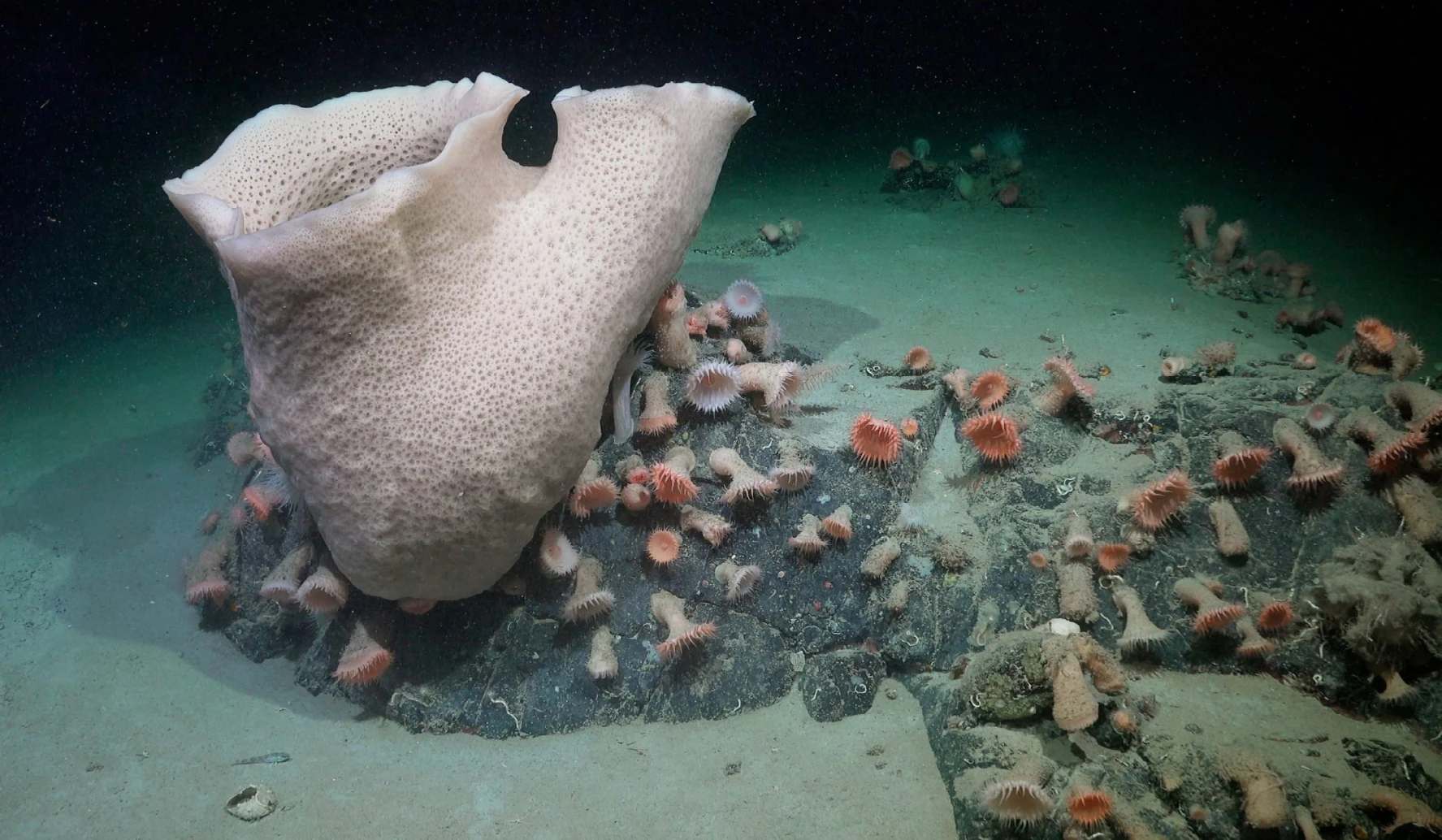Why in the News?
Recently, the fourth-generation deep-ocean submersible named Matsya 6000 successfully completed its wet testing.
About MATSYA 6000
- MATSYA 6000 is an indigenously built manned submersible, under the Samudrayaan project ( a project under the Deep Ocean Mission).
- Objective of Samudrayan Project (Period 2020-2021 to 2025-2026): To develop a self-propelled manned submersible to carry 3 human beings to a water depth of 6000 meters in ocean with scientific tools for deep ocean exploration.

- Developed by National Institute of Ocean Technology (NIOT), it is designed to carry three humans to a depth of 6000 m.
- National Institute of Ocean Technology (NIOT) Chennai is an autonomous institute under Ministry of Earth Sciences.
- Aim: To comprehensively study deep-sea resources and marine biodiversity assessment up to 6000 meter depth.
- With its launch, India will become sixth country (after US, Russia, Japan, France, and China) to have crewed under-sea expedition.
About Deep Ocean Mission
- Launched: In 2021 by Ministry of Earth Sciences (MoES) as a Central Sector Scheme with Cabinet approval.
- Purpose: To develop technologies for exploring deep ocean resources, promoting sustainable marine development, supporting the Blue Economy initiative, and addressing climate change and pollution.
- Alignment with Global Goals: Mission aligns with United Nations Sustainable Development Goal 14 (SDG-14), which emphasizes the protection of "Life below Water" and highlights ocean's role in sustaining life and the environment.
- Considering importance of oceans on sustainability, UN has declared decade, 2021-2030 as Decade of Ocean Science for Sustainable Development.
- Budget and Timeline: Mission has an estimated budget of Rs.4077 crore, to be implemented over 5 years (2021-2026) in a phase-wise manner.
- The first phase (2021-2024) is allocated Rs.2823.4 crore.
- Nodal Ministry: Ministry of Earth Sciences (MoES) is nodal ministry overseeing this multi-institutional mission.
Significance of Deep Ocean Mission

- Strategic Importance: India's unique maritime position with a 7517 km coastline, nine coastal states, and 1,382 islands offers significant potential for marine resource utilization.
- India has an Exclusive Economic Zone allocated nearly 23, 72,298 sq. km which is unexplored and unutilized.
- Mission supports the government's 'New India' vision, which identifies Blue Economy as one of ten core dimensions of growth.
- Economic Impact: Aims to ensure the sustainable utilization of ocean resources for long-term economic benefits. It will contribute to GDP growth, improved livelihoods, and job creation.

- Focuses on exploring resources like nickel, cobalt, and other minerals, including polymetallic nodules.
- Science and Technology: Facilitates deep-sea exploration through a manned submersible, enabling scientists to observe and study unexplored deep-sea areas directly.
- Underwater Engineering: Promotes innovation in asset inspection, enhancing safety and maintenance in marine infrastructure.
- Ocean Literacy and Tourism: Encourages public awareness about marine ecosystems and opens avenues for marine tourism.
Challenges of Deep Ocean Mission
- High Pressure: At a depth of 5,000 meters, pressure will be approximately 500 times greater than pressure at sea level. Thus the mission requires specially designed, durable equipment to withstand immense pressure.
- Technical Challenges:
- Equipment Vulnerability: Electronics and instruments struggle to function efficiently underwater.
- Material Extraction: Requires significant power to pump materials from the ocean floor to the surface.
- Communication Limitation: Communication systems face challenges due to waves backscattering, high attenuation etc.
- Geopolitical and strategic challenge: China's increased presence in deep-sea regions could restrict India's exploration efforts, especially in resource-rich zones like the Southwest Indian Ocean.
Way Forward
- Accelerating Indigenous Capabilities: Investing in additional ocean research vessels and acoustic research systems will boost India's self-reliance in deep-sea exploration.
- Leveraging International Cooperation: India should actively collaborate with technologically advanced nations such as US, Japan, and Australia to enhance expertise, resource-sharing, and technology transfer.
- Platforms like Quadrilateral Security Dialogue (Quad) can facilitate coordinated efforts in deep-sea research and mining.
- Utilizing Indo-Pacific Oceans' Initiative (IPOI): India should focus on IPOI's four key pillars i.e., Maritime Ecology, Maritime Resources, Capacity Building, and Science & Technology Cooperation to strengthen deep-sea exploration strategies.







